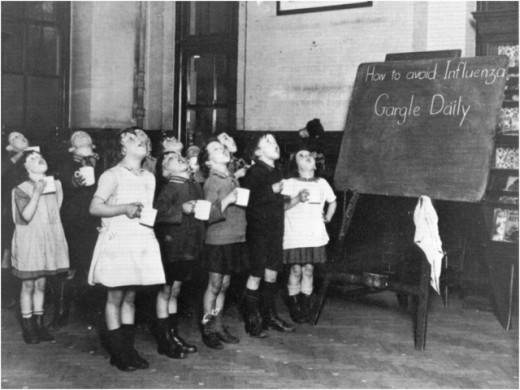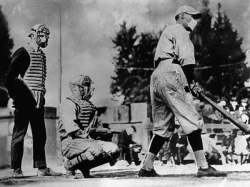- HubPages»
- Books, Literature, and Writing»
- Books & Novels»
- Nonfiction»
- Biographies & Memoirs
The Great Influenza, Deadliest Disease in History

The horrifying history of Influenza
If asked, could you describe the difference between the common cold and the flu? Believe it or not as late as WWI, the general population and the international medical industry still did not know how to prevent the spread of communicable diseases or even their basic make-up. In fact, the horrifying truth was that as late as the early 1900s most doctors in the US did not even need to study the human body before they got their medical license. John Barry's book, The Great Influenza, tells not only the history of one of the most common and deadliest diseases, but also the origins of health awareness and research in this country. He reveals the great truths of early disease research, from both public and private interests and helps to take the intricate make-up of viruses to the everyday reader. This is not the typical book for the everyday reader, but yet with Avian Flu or H1N5 and Swine Flu or H1N1 becoming part of the national vocabulary, an understanding of what these diseases are and more importantly why public agencies are so afraid of them is helpful for all of us. Be forewarned that this book reveals truths about the potential for pandemics that can be quite alarming.
Image Credit: SDHD

The Virus, Virology, and Hygiene
How do you start a book on a topic like the flu? Some might start with the actual disease itself, but that would limit the reader to a very small view of the overall story. Instead, John Barry decided to go much further back and look at the overall view of diseases in general, the medical research and treatment in the US and only then to this terrible disease. One of the most remarkable aspects of this book was the full view of what a virus really is and how the body fights it off. In fact it went into great depth in very basic terms the body's mechanisms for fighting off infections. For instance, one of the types of white blood cells (for there are actually 6 types) acts like a Swiss army knife with a pattern for every disease ever encountered in that body. If it can match the pattern, it would know how to fight the disease, thus a weakened virus introduced to the body (aka a vaccine) teaches the body how to fight a given disease. This startling development created the field of virology to help create weaned or dead vaccines to educate the immune system. It is impossible to do full justice to the details of immunization and the pathology of viruses in just a paragraph but this book does so in a few wonderfully informative chapters.
But now we hesitatingly approach the actual disease itself. Picture a time when an unknown disease is decimating entire cities around the world and is spreading faster than history has ever seen due to a world war. Scientists were tasked with trying to stop a tidal wave that they did not even have a name for let alone a working understanding of how to fight it. First, they had to identify the disease itself, then they had to understand how it spread and only then could they possibly have a chance at stopping it. Meanwhile, people were literally dying around them. There are stories of scientists who took the public trolleys to work and by the time they went home the conductor would be visibly sick, and by the next day either critically sick or dead. This was the world in the late 1910s and early 1920s. Herculean efforts were taken not only by scientists but also by doctors and nurses who cared for and studied patients simultaneously. Together they invented the field of virology (study of viruses) and an understanding of hygiene.
Today it is difficult for many of us to picture a time before daily showers, anti-bacterial wipes, even the basic practice of washing hands before meals. But prior to in-depth research on infectious disease, the US population had an abysmal view of personal hygiene. Sadly, there was still the belief that too many baths was actually the cause of many illnesses. This lack of hygiene was exasperated in hospitals where massive wards were built in times of war where even those without a contagious disease on admission, would quickly get infected without the benefit of hand washing, gloves or isolated rooms. Once the discovery was made that people could infect each other, but could also prevent it by covering their mouths and washing their hands; the population dramatically changed its habits overnight. Entire industries were created in a few short months to help keep the population healthy, or at least the belief that certain actions would keep you healthy. One notable example was what to do with an anti-bacterial liquid that is too weak to work on house cleaning? One enterprising individual thought it would make great sense to make people gargle with it and thus cleanse their mouth and upper throat. Instantly a billion dollar market of mouthwash was invented.

Overall review of this book
Trying to educate readers of not only the make-up of viruses, the methods the human body takes to defend itself from outside diseases, and the history of influenza is no easy task. This book provides both education and entertaining on what at the time seemed like the apocalypse. To do so to an audience without medical degrees was a work of art for John Barry. John Barry is able to paint a picture of what it was like to live at the time and in the setting when people were dying on all sides of you, when panic was the top emotion and everyone learned about science hoping it would bring about miracles.
I would recommend this book to everyone who has ever questioned what a vaccine is and how to protect themselves and their families from infections. Or for those who are not as familiar with the great influenza and thought Swine Flu or Bird Flu were terrible events, you will be surprised by the tremendous fear that a swine flu pandemic caused to governments and neighbors. Be warned that there are some very graphic scenes in the book since it was one of the worst epidemics in US and world history.

What we can learn from this story
When we turn on the T.V. today or open up a newspaper (yes I know, no one opens newspapers anymore we click on them, call me old fashion) besides news events we learn about celebrities, movies, weather and of course sports. But rarely do we see science being highlighted by mainstream mass communication. From 1916 through the 30s, science and medicine was a top topic, because it was truly changing people's lives. Today both science and medicine touches each of us even more than in the past yet we take it for granted. Discoveries that have made the great influenza a past event and not a recurring event in our lives is only possible because kids chose to go down the path of becoming scientists. Math and science was considered to be great honors to be studying in school.
I would ask all parents to speak to their kids about the amazing things that science has brought to their lives. Think about investing some time doing science experiments with your kids to get them excited. Much of this can be done with just household items, like using a potato to illuminate a light bulb, or creating rock candy with a cup of sugar. If we don't get kids excited about science how do we overcome the next great challenge to our civilization. Lawyers, sports agents, and reporters are laudable professions, but scientists should be put on one of the highest pedestals for all of our children!







